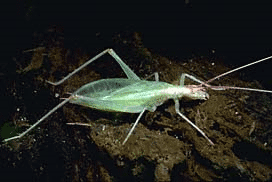 Carpenter ants are now swarming in homes throughout Texas. Besides signaling the end of winter, carpenter ants can also signal whether your company can be trusted to provide honest advice about pest risks.
Carpenter ants are now swarming in homes throughout Texas. Besides signaling the end of winter, carpenter ants can also signal whether your company can be trusted to provide honest advice about pest risks.Of course the presence of swarming carpenter ants means that a carpenter ant nest resides somewhere in the structure. But is this really a problem? Most entomologists and experienced Texas PMPs will say no (carpenter ant species and behavior and damage potential are different in other parts of the U.S.). Small carpenter ant colonies that swarm once a year and otherwise cause no problems to the homeowner need no aggressive pest control. The fact is that Texas carpenter ants rarely cause damage to structural wood, mostly choosing to nest in void areas between studs or behind insulation in walls.
I believe it pays to be upfront with customers about the real risks, or lack thereof, of not treating carpenter ants. Many customers will want carpenter ant control even if they know that their home is not is danger. Even though they are not wood-destroyers, carpenter ants can be a nuisance by continually entering the living areas of a house. Many customers will be repelled by their presence and be willing to pay for control service in any case. Your other prospective customers will greatly appreciate an honest assessment of the situation, and be relieved that they don't really have to spend a lot of money to protect their home. For the latter category of customer, I am pretty sure you will be the first one they will call or refer to a neighbor when a more serious pest problem arises.
Yesterday my wife and I met with an energy auditor who had come to give us a free assessment of the energy efficiency of our home--a service that is subsidized by our electric delivery company. We talked about the different philosophies of companies who offer this service and learned that some companies charge for weatherproofing and others do it as part of the free audit. The companies who offer free weatherproofing typically use a hard sales routine to sell other improvements that the customer may or may not need. Our auditor's company takes the other approach and uses the free audit as a chance to explain their other services (detailed computerized energy audits, weatherproofing and energy efficient windows--all for a fee, of course).
I greatly appreciated the lack of pressurized sales pitch. After our talk, I felt convinced that this company would give me something for my money and would tell me when I would or wouldn't benefit from an energy upgrade.
As a consumer I am more likely to establish a relationship with a company I can trust, compared to the one who leaves me with a bad taste in my mouth (even if I succumb to their aggressive tactics). In the case of carpenter ants, every pest control company has a choice between scaring a sale out of someone (if you don't treat carpenter ants will tear down your home!) and providing the customer with the facts and letting them decide.
Honesty is even more important among educated consumers today. An increasing number of people who call you to their homes have already researched the subject online and will recognize when a salesperson is blowing smoke. Swarming season is a great time to establish a reputation with prospective customers and can lead to later, legitimate services (Can we call you back in two months to see if these ants have become a nuisance in your home?).
In today's economic climate I think we want customers who will stick with us through tough times, who trust us and who will gladly tell others about the good work we do. Carpenter ant season can help reveal which of us are worthy of those kinds of customers.



